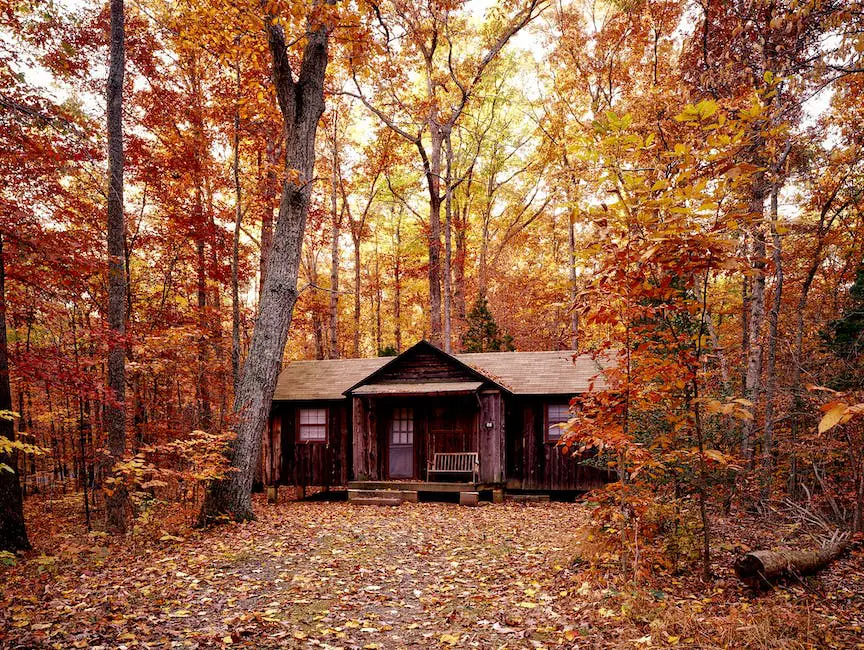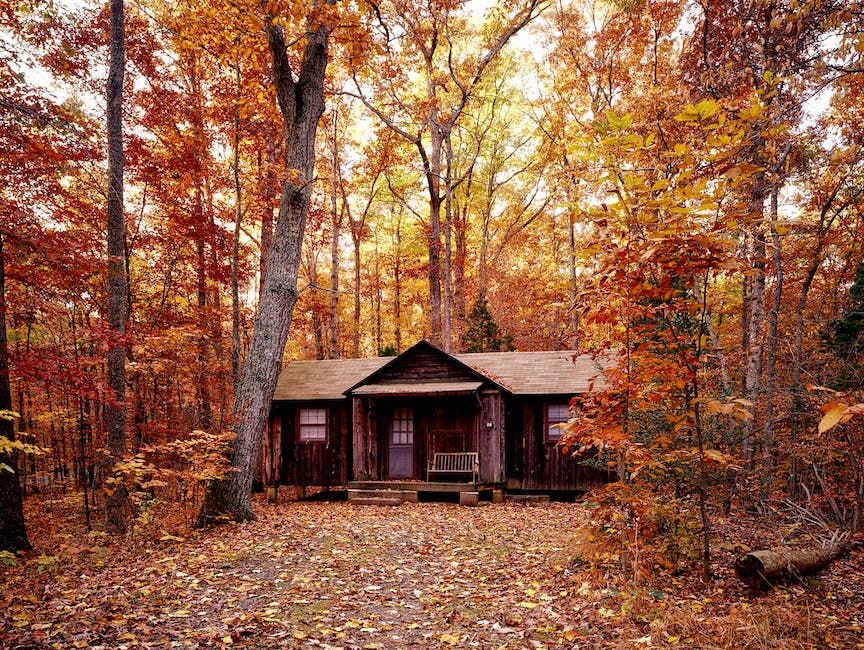There are a few things to consider before pollarding a maple tree. The first is the type of maple tree. There are three main types of maple trees–red, silver, and sugar–and each has different characteristics. The second is the location of the tree. Pollarding should be done on trees that are at least five years old and are located in an open area. Finally, the time of year is important. Pollarding should be done in late winter or early spring, before the leaves bud.
Yes, you can pollard a maple tree.
Can you cut the top off a maple tree?
While topping a tree may seem like a harmless way to trim it down, it can actually cause a lot of damage. The pruning wounds from topping are serious and can destroy the tree’s natural shape. If you have a maple tree that is scraping an electric line, you can use crown reduction pruning to reduce the tree’s height without causing all of the damage that topping would.
Pruning is a vital tree maintenance activity, but too much pruning can be detrimental to the tree’s health. When removing branches, only a third of the tree’s total aboveground growth should be removed at one time. Removing more than that can stress the tree and make it more susceptible to disease and pests.
Which trees can be Pollarded
Pollarding is a method of pruning that keeps trees and shrubs smaller than they would naturally grow. This is done by cutting back the main branches of the tree to a uniform height. Pollarding can be used on a variety of trees and shrubs, including ash, common lime, elm, elder, gum, London plane, mulberry, and oak.
You want to cut first at one side and then the other side. And then you’re cutting that whole heavy piece of meat in half.
How do you stop a maple tree from growing taller?
Pruning is a great way to keep your tree healthy and looking its best. If the crown of your tree is stretching too tall or wide, corrective pruning can help rein it in and size it down for the space available. It’s crucial to prune a tree before it becomes a problem because taking away too many branches could cause unnecessary stress.
While topping may be a temporary fix to tree height, it is not a long term solution. New sprouts that grow from cut areas will grow back much faster than normal growth, which defeats the purpose of height control. Weak limbs: Because the new limbs will grow so fast, they will be much weaker than normal limb growth.
What happens when you cut the top off a maple tree?
Tree topping should be avoided as it can cause serious damage to the tree. Topping can leave large wounds which make the tree vulnerable to disease and decay. In addition, topping can cause immediate injury to the tree, and ultimately lead to its early failure or death.
This is a good time to prune your maple tree because the leaves are fully expanded and have turned a dark green. This will help the tree to recover from any wounds and will also help to shape the tree.
How do you trim a maple tree without killing it
You should prune your maples in mid- to late- summer in order to avoid them bleeding sap. Sap is like a tree’s blood, and if a tree loses too much of it, it can die. Pruning later in the summer will help to lessen the flow of sap.
Pollarding is a method of pruning young trees in order to keep their growth more compact. This method is used by cutting branches close to the trunk on a regular basis. It is important to note that pollarding should be done properly in order to avoid harming the tree.
Does pollarding reduce root growth?
Pollarding is the process of trimming a tree back to its main trunk or branches. This is often done to promote new growth, improve the tree’s appearance, or increase its resistance to wind and other elements. Frequent pollarding will slow down root growth and can prevent damage to the tree’s lower levels.
Pollarding is a method of pruning that encourages juvenile shoots of great vigour. This can produce larger, more ornamental leaves in species such as Catalpa, Cercis and Paulownia.
Do maple tree branches grow back
When pruned properly, removed tree branches will not grow back. Instead, the tree will grow what looks like a callous over the pruning cut, which helps protect the tree from decay and infection. Because trees heal all on their own, you don’t have to use a pruning sealer!
This is called pruning and it is done to encourage new growth and to keep the tree healthy.
Should I prune the lower branches of a maple tree?
Hi,
As you know, it’s important to prune trees regularly to keep them healthy and looking their best. Here are some tips on pruning your maple tree:
As the tree grows, prune off too-low branches to raise the canopy. The ideal height under a tree is about 6 feet, for safety reasons.
You’ll probably want to retain the maple’s natural oval shape. Prune off diseased or broken branches, as well.
If branches are crossing, prune them off.
Thanks!
The best time to prune your maple trees is in the late winter or early spring, before they bloom in the spring. However, you can also prune maple trees in the late summer in order to shape them, slow the growth of certain branches, and get rid of any dead limbs.
Can you cut off the top of a tree without killing it
When you “top” a tree, you cut off its leaves, which are its food source. The tree will then slowly starve to death.
When planting maple trees, it is important to take into account the size of the root system. The root system of a maple tree can extend 4-5 times its height. Therefore, large red, yellow, and sugar maples should be planted 25-feet apart, while the smaller varieties can be spaced about 10-feet apart.
What is the difference between topping and Pollarding
Pollarding and topping are two terms that are often used interchangeably, but they actually have different meanings. Pollarding is a method of pruning trees that is done with design in mind, while topping is simply done out of expediency. More thought and planning goes into pollarding, which is considered an art form, much like topiary.
If you plan on pruning a Japanese maple, it’s best to follow these guidelines: remove dead branches mostly from the interior, avoid trying to majorly reshape, avoid shearing, and use clean cuts back to lateral branches or buds. Also, disinfect your tools after each tree to prevent the spread of disease.
What does an unhealthy maple tree look like
Cedar-quince rust is a plant disease that affects cedar trees and quince plants. The range of symptoms includes leaf spots, blighted leaves and young shoots, cankers, and dieback of young twigs and branches. The most common symptoms are large, irregular, dead areas on the leaf that are often V-shaped or delineated by the veins. These areas can be tan and paper-thin.
Crown reduction pruning is the preferred method to reduce the size or height of the crown of a tree, but is rarely needed and should be used infrequently. Topping, the pruning of large upright branches between nodes, is sometimes done to reduce the height of a tree (Fig 7A).
When can you trim a Chinese maple tree
winter is the best time for modifying the branch structure of your tree because the tree is dormant and the sap is not flowing. Summer is the best time for thinning out the branches of your tree because the leaves are actively transpiring and the sap is flowing, which helps heal the tree.
Again, using your gloves and safety glasses to protect yourself, this tree here, this maple that we’re looking at, we’re going to want to take our saw and cut it at a 45 degree angle.
Can you cut a branch off a maple tree and plant it
To successfully propagate a plant, you will need to take a cutting from a healthy plant. Make sure to choose a branch that is young and pliable. Cut the branch at a 45 degree angle, about 10 inches long. Remove all the leaves from the cutting, except for a few at the top. Dip the cut end of the branch in rooting hormone. Finally, poke a hole in the soil using a pencil or your finger. Place the cutting in the hole and cover with soil. Keep the soil moist and watch for new growth.
Maple trees are susceptible to a number of diseases and pests. Verticillium wilt, also known as maple wilt, is a common and serious problem that can kill trees. Other maple tree diseases and pests include root rot, gall mites, cankerworms, aphids, cottony scale, petiole borers, leafhoppers, and boxelder bugs.
How do you trim a large red maple tree
May to early June is the best time to prune your tree. If your tree is young, do little pruning. Prune away all dead branches. Cut new shoots growing off the middle of existing branches. Remove any branches that obstruct walking or driving under the tree.
Pollarding is a method of pruning trees that involves cutting them back to stumps or pollards. While this method can be helpful in reducing the size of trees, there are some disadvantages to consider as well.
The sprouts that appear after pollarding are attached weakly to the ‘knob’ and may break off. This can lead to weak and unstable trees. Additionally, mature trees that have not previously been pollarded can be killed by the process if it is done incorrectly. Even healthy trees and shrubs are exposed to pests and diseases after pollarding is done, which can cause long-term damage.
Final Words
You can pollard a maple tree by cutting off the main stem at a point 2-3 feet above the ground.
Yes, you can pollard a maple tree.
I’ve always been drawn to trees.
As a kid, I spent most of my free time outside, climbing, exploring, and trying to figure out the names of the trees around me.
That early curiosity eventually led me to study arboriculture and horticulture at Michigan State.
Later, I completed a degree in forestry at the University of Michigan.
I’ve been working in tree care and education ever since.
These days, I enjoy helping people learn more about the trees in their own backyards.
How they grow, how to care for them, and why they matter.
You don’t need to be an expert to appreciate trees.
A little curiosity goes a long way.
